EPJ E Highlight - Enigmatic Nematics
- Details
- Published on 31 October 2012
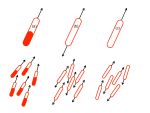
The law of hydrodynamics governing the way internally driven systems behave could explain their complex structure
Physicists use hydrodynamics to understand the physical mechanism responsible for changes in the long-range order of groups of particles. Particularly, Aparna Baskaran of Brandeis University, Massachusetts, USA, and Cristina Marchetti of Syracuse University, New York, USA, focused on ordered groups of elongated self-propelled particles. They studied the breakdown of long-range order due to fluctuations that render them unstable and give rise to complex structures, in a study just published in EPJ E within the topical issue on Active Matter.
EPJ E Highlight - DNA’s double stranded stretch
- Details
- Published on 27 October 2012
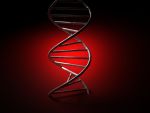
Models simulate what happens to DNA strands when stretched to the breaking point
Theoretical physicists like to play with very unconventional toys. Manoel Manghi from Toulouse University in France and his colleagues have adopted a seemingly playful approach to examining what happens to a double stranded molecule of DNA when it is stretched to the breaking point, in a study about to be published in EPJ E. Instead of using optical tweezers to stretch DNA as previously done in experimental settings, the authors focused on using a theoretical model to account for the structural deformations of DNA and determine how its mechanical characteristics could explain certain biological processes.
EPJ E Highlight - The hidden threat posed by inconspicuous stripes
- Details
- Published on 23 October 2012

Physicists investigate the cause of striped patterns formed by fine particles deposited on surfaces
Patterns fascinate. Particularly stripes. Found in nature in zebras, they are also found in the most unlikely places, such as powdered drugs’ mixing vessel walls. In an article just published in EPJ E, Nirmal Thyagu and his colleagues from Rutgers University, New Jersey, USA, propose a traffic model to predict the formation of different patterns, ranging from stripes to spots.
EPJ E Highlight - Scaling up polymer blobs
- Details
- Published on 21 October 2012
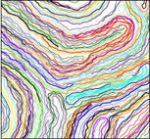
Several new simulations performed on polymers outline their scaling-up behaviour at extreme limits where it depends on their density and length.
Scientists use simulations to test the limits of their object of study—in this case thin films of polymers—to extremes of scale. In a study just published in EPJ E, Nava Schulmann, a researcher at Strasbourg University, France, and colleagues use a well-known model capable of providing information on heat and mechanical energy exchange between these polymer chains. They found that polymer blends confined to ultrathin two-dimensional films displayed enhanced compatibility. This was made possible by simulations using a fairly standard model, which is simple enough to allow the efficient computation of dense large-chain systems.
EPJ E Highlight - Self-forming biological scaffolding
- Details
- Published on 21 October 2012
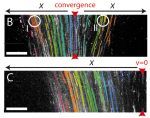
A model system that can interpret the role of cross-linking proteins.
A new model system of the cellular skeletons of living cells is akin to a mini-laboratory designed to explore how the cells’ functional structures assemble. A paper just published in EPJ E by physicist Volker Schaller and his colleagues from the Technical University Munich, Germany, presents one hypothesis concerning self-organisation. It hinges on the findings that a homogeneous protein network, once subjected to stresses generated by molecular motors, compacts into highly condensed fibres.
EPJ E Colloquium – From shear banding to elastic turbulence
- Details
- Published on 21 October 2012
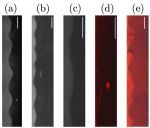
A new model provides an alternative description of atomic level gold bonding.
While simple Newtonian liquids are structured at the molecular scale, complex fluids are structured at the mesoscopic scale. Shear-banding is a ubiquitous phenomenon in complex fluids. It relates to the formation of regions (bands) with different fluidities and stacked along the velocity gradient direction. Shear banding is a transition towards a heterogeneous state induced by the flow itself. It’s been observed in many systems of practical relevance, including giant (wormlike) micelles, telechelic polymers, emulsions, clay suspensions, colloidal gels, star polymers, granular materials, or foams. Giant micelles, the subject of a recent EPJE Colloquium,EPJ E - Too cool to follow the law
- Details
- Published on 10 August 2012
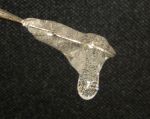
Study suggests viscous materials do not follow standard laws below a sub-melting point threshold.
So-called glass-formers are a class of highly viscous liquid materials that have the consistency of honey and turn into brittle glass once cooled to sufficiently low temperatures. Zhen Chen and his colleagues from Arizona State University, USA, have elucidated the behaviour of these materials as they are on the verge of turning into glass in an article just published in EPJE.
EPJ E – Turbulent convection at the core of fluid dynamics
- Details
- Published on 10 August 2012
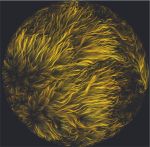
Buoyant convection of a fluid subjected to thermal differences is a classical problem in fluid dynamics. Its importance is compounded by its relevance to many natural and technological phenomena. For example, in the Earth atmosphere, the study of thermal convection allows us to do weather forecasts and, on larger time and length-scales, climate calculations. In the oceans, where there are differences in temperature and salinity, turbulent convection drives deep-water currents. Geology and astrophysics are other areas where thermal convection has great impact.
EPJ E – Graphical abstracts now required in EPJ E
- Details
- Published on 10 August 2012
We are pleased to inform the readers and authors of EPJ E that from now on articles published in EPJ E will feature a graphical abstract. While it is not meant to provide specific results, this element will serve the purpose of conveying visually the gist of the article, along with the title. Authors may use an item already present in the manuscript or a purpose-made graphic. The use of color is strongly encouraged. Images previously published under the copyright of other publishers cannot be considered.
EPJ E - Giraffes are living proof that cells’ pressure matters
- Details
- Published on 10 August 2012

A model that describes dividing cells within human tissues from the perspective of physicists could help further the understanding of cancer growth.
Physicists from the Curie Institute, France, explored the relative impact of the mechanical pressure induced by dividing cells in biological tissues. This approach complements traditional studies on genetic and biochemical signalling mechanisms to explain experimental observations of how biological tissues evolve. This work, recently published in EPJE, could have significant implications for the understanding of cancer growth.





